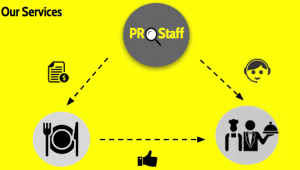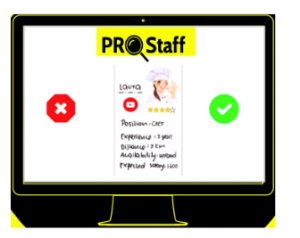The service-related sectors are heavily dependent on personnel. Particularly in the food and beverage industry, restaurateurs often require more staff during the peak hour or peak season. However, one of the challenges for restaurateurs remains to be staff management. According to Dermody (2002), managers claimed that one of the main issues employees care about when looking for a job is the working environment. Furthermore, compensation and monetary awards, as well as flexibility in work schedule, are other important factors considered by the job seekers. The recruiting problem exists for all levels of positions. Specifically, backhouse positions (e.g. dishwashers, kitchen assistants), which require less skill than those in the front of the house (e.g. waiters, hostesses, busboys), are found to be more challenging as managers often rely on immigrants to fill the positions. Moreover, finding qualified candidates for management positions is equally difficult, in which, previous studies discovered that identifying skilled managers has been a constant concern (Enz, 2004). Adding to that, the working environment in the dining industry features long working hours and tedious responsibilities, leading to a high fluctuation rate in the workforce. This can result in a knowledge gap among staff, addon job scopes, lower performance rate and lastly, affecting the customers’ experience (Kim, Leong & Lee 2005).

Diagram of ProStaff service: direct connection between restaurant owners and appropriate candidates
Reported by the National Restaurant Association, employee turnover across the entire restaurant industry was 61% in 2016 and that percentage is almost twice as high for front-line workers. Moreover, one of the consequences is that restaurants on average are losing around $150,000 per year due to the high employee turnover rate (Mack, 2017). Therefore, the idea of ProStaff serves as an online platform for restaurant owners and human resource department to look for potential candidates. ProStaff is a digital recruitment platform that provides a user-friendly interface to assist restaurateurs to search for qualified staff. By applying the gamification of Tinder’s swipe motion and the professional network structure from LinkedIn, the digital recruitment process can be the future envision for talent recruitment and management.

Prototype of a display page of the ProStaff application
The solution has several contributions to the food and beverage industry. First, as confirmed by three different restaurant managers in Salzburg that human resource is the main challenge, it calls an urgent need for a tool to simplify the staffing process in the hospitality industry. That is, ProStaff will be the new talent recruitment benchmark as the process is digitalized and more efficient as the present technology advances at a fast pace. With a clear navigating design, restaurant owners and job hunters ranging from Millennials to Baby Boomers can easily search for the appropriate candidate or job within minutes. Prostaff also provides legal services to advance the hiring process to benefit both parties efficiently. Candidates’ background will be verified prior their profile upload into the database, making sure they are experienced in the corresponding positions they are searching for. As some of our teammates experience long waiting periods for legal contracts and availability for part time jobs, we also provide services to deduce the processing time and complex legal procedures.
In order to meet the needs of target customers (i.e., restaurant owners), ProStaff will start from an adaptive website version to minimize risks in the initial phase. Benefits are mutual for ProStaff and restaurateurs, excluding the cost for app development. On the restaurant managers’ side, requires less time to familiarize with app usage. Adding to that, with the combination of LinkedIn and Tinder, future potential be applied with manpower agencies for fast solutions and have continuous updates on within their data pool of their candidates. For future potential cooperation, ProStaff can cooperate with AMS and manpower temporary agencies to help job seekers from various industries with the same interface design.

Easy gamification use of the application
Moreover, ProStaff will charge restaurateurs €300 per year + €25 per each successful match; on the other hand, job hunters do not need to pay unless they want higher visibility or information faster, a premium plan for €10 per month is provided. In order to break even within the 5-year achievement, we will need to acquire 175 restaurants (€61,250 with yearly membership and 350 successful matches (2 per each restaurant)) and 1,080 premium users (1,080x€30 with an average of a 3-month use). A long-term economic success is guaranteed through the annual subscription fee of €300 and €25 per each successful match. By extending our database, we contribute our customers with a bigger variety of highly qualified staff and ensure more successful matches. Also, ProStaff actively supports the economic stability of the region by providing an online environment for job seekers and businesses. ProStaff serves as an assistant to reduce time and budget for restaurant owners in the staffing process, which facilitates the managers to focus on the core business. In the job seekers’ perspective, it offers more opportunities to reach out to further employees. To sum up, ProStaff brings positive impacts and benefit to the local social ecosystem. It not only lowers the unemployment rate within the region but also improves the living quality of the wage earners.
ProStaff Team
https://www.youtube.com/watch?v=wzb9dvrxpLE
Reference
Dermody, M. B. (2002). Recruitment and Retention Practices in Independent and Chain Restaurants. International Journal of Hospitality & Tourism Administration, 3(1), pp.107–117.
Enz, C. A. (2004). Issues of Concern for Restaurant Owners and Managers. Cornell Hotel and Restaurant Administration Quarterly, 45(4), pp.315–332.
Kim, W.G, Leong, J.K, Lee, Y.K. (2005). Effect of service orientation on job satisfaction, organizational commitment, and intention of leaving in a casual dining chain restaurant. International Journal of Hospitality Management, 24(2), pp. 171-193.
Mack, R. (2017). What is the Real Cost of Restaurant Employee Turnover?. Modern Restaurant Management. Retrieved from: https://www.modernrestaurantmanagement.com/what-is-the-real-cost-of-restaurant-employee-turnover/

